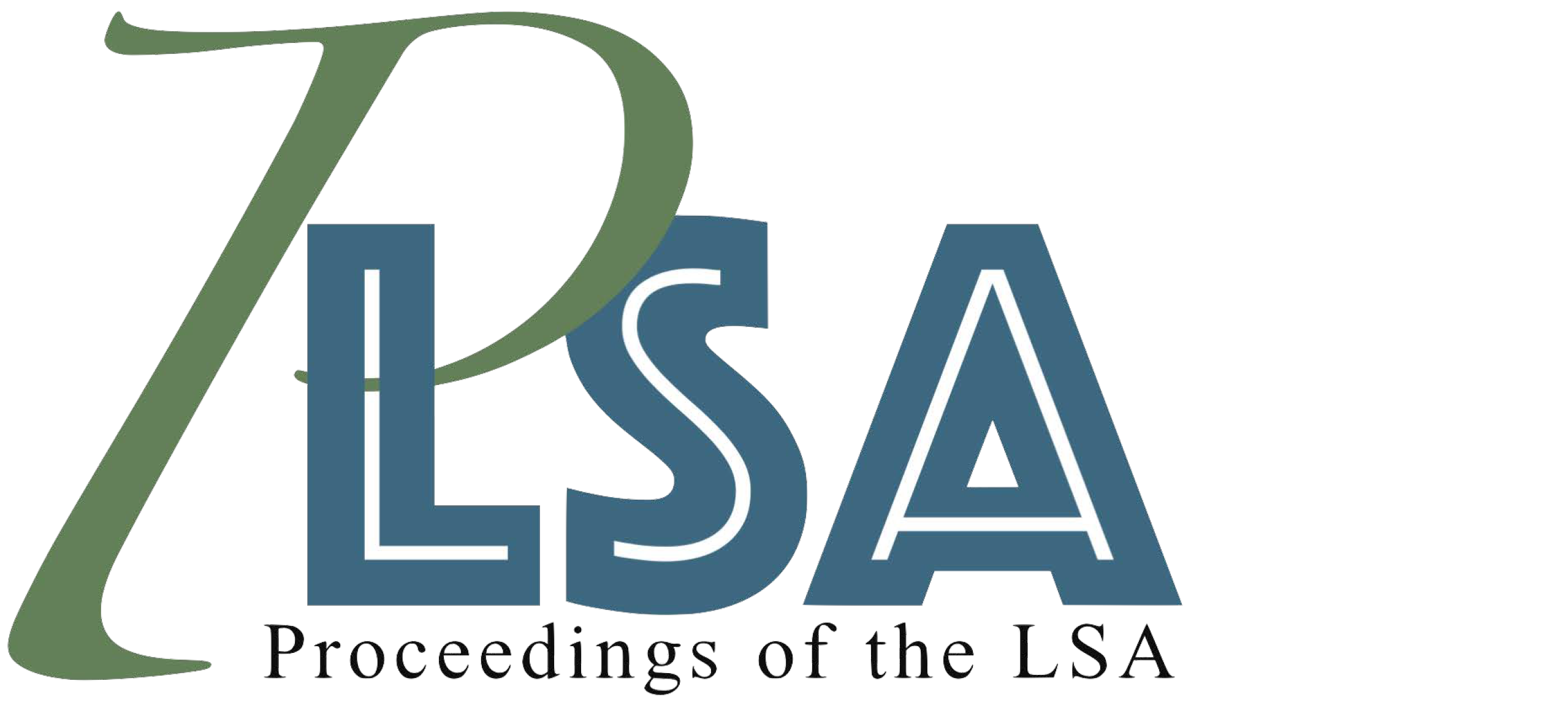Extending familiar constructions: How autistic and non-autistic adults fill in the blanks
DOI:
https://doi.org/10.3765/plsa.v10i1.5929Keywords:
autism, constructions, flexible extensions, categorizationAbstract
Autistic individuals show group level differences in categorization tasks compared to non-autistic individuals, exhibiting a strength in detecting differences and a reduced tendency to flexibly generalize. The current work indicates that autistic individuals are challenged by a task that require extensions of familiar constructions in relatively novel ways, a challenge previously documented at the level of individual words. Study 1 provides a series of phrases that each contain a single blank slot, and participants are asked to choose which of four words best fits the slot. In key Flexible Extension trials, the target word only infrequently occurs in the phrase in corpus data, but it is more suitable than the other options. Results indicate that AS adults find it more challenging to flexibly extend familiar phrases in new ways than their non-AS peers, when performance is matched on trials that do not require flexible extensions.
A second study tests the extent to which autistic and non-autistic adults converge on the same prototype for familiar multi-word phrases by asking them to generate words to fill open slots. Results suggest that AS participants show less convergence (greater entropy) in the generation of fillers for open slots, when matched with non-autistic participants on education level and verbal fluency. Current results suggest that categorization differences are a subtle yet persistent difference that is relevant for phrasal patterns as well as words.
Downloads
Published
Issue
Section
License
Copyright (c) 2025 Nicole Cuneo, Adele E Goldberg

This work is licensed under a Creative Commons Attribution 4.0 International License.
Published by the LSA with permission of the author(s) under a CC BY 4.0 license.
